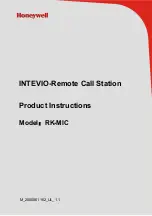
So how did you manage to make those
first recordings in Bali?
I had the ultimate boring job at a trade paper in New
York. I asked my boss, “I’d really like to go to
Southeast Asia; any chance of a leave of absence?”
He said, “Sure!” We agreed that I would use a few
days of that leave of absence to do a story for the
magazine on banking in wartime conditions in
Vietnam. How’s that for a scam?
It’s a good one! [laughs]
Yeah, I thought so too! I took off and went around
Southeast Asia. First stop was Fiji, then Japan. After
that it was Taiwan, Java and Bali. We’re talking about
1966. Do you realize that there were no battery-
powered stereo portable recorders at that time? The
stereo Nagra hadn’t been invented, and the venerable
Nagra 3 was still the state-of-the-art field recorder. For
stereo there were Ampex 600s and the like, but
nothing that you could take around with you. When I
got as far as Singapore, all I had was a mono Uher
4000. It was used by reporters a lot, weighed about
eight pounds, and ran on lead acid batteries. I also had
a pair of very decent small condenser mics, which a
friend had lent me. Imagine my delight when I walked
into a store on Orchard Road in Singapore and saw a
battery-operated stereo recorder called the Concertone
727, selling for less than 200 bucks! It took five-inch
reels and was pretty flimsy. But luckily, it worked
during my time in Bali and Java. In Bali I struck up a
friendship with a young chap who didn’t want to use
his princely real name, preferring to be called Dean,
which he thought was really trendy! When I talked
about wanting to record gamelan, he said, “Oh, no
problem I’ll take you around.” Part of being a cultured
Balinese gentlemen is a serious interest in the arts,
painting, sculpture, and music and dance. So before
noon, we would go to three different locations, meet
the gamelan managers and arrange sessions for later
that day. How’s that - three sessions in a day? The first
one at 2 pm for an hour or so, then the next one at 4
pm for an hour or so and then the final one after dark.
Did the recordings elicit any kind of a
response?
I don’t recall. But obviously they were
reasonably
satisfied. By today’s standards, the recordings aren’t
that good. But at that time, there weren’t any stereo
recordings. I wish the geniuses who design plug-ins
would find a way to eliminate distortion, a flaw of
many of those early recordings. Their inadequate
sound prompted me to return in the late ‘80s.
Nonesuch was transferring some of the old masters to
digital. They thought that
Music from the Morning of
the World
was something that many people wanted,
so it was in the first batch. When I listened I was
really disappointed by the distortion, poor mic
placement and other inadequacies. So, I went back in
’87 and spent five months redoing everything.
Is there a lot of extra material floating
around on tapes that have never
made it on to record or CD?
Hours and hours. At the moment, I am trying to find a
home for the 400 hours that I have sitting in the
archives. Not just Balinese, but also Tibetan rituals, a
lot of Himalayan folk, 50 five-inch tapes of South
American music, plus Central America and much else.
What do you think you have the most of?
Tibetan rituals, probably, because they’re so long. At one
monastery it’s nothing for me to record five or ten hours
of material in a day. When I returned to New York in
1966, I got to meet the now-legendary Teresa (Tracey)
Sterne, a fine musician who had been hired by Jac
Holzman, the guy who started Elektra, to run his new
Nonesuch label. Jac was interested in folk rock, and by
extension, intriguing music from faraway places. So he
started what was originally called the International
Series, which under Tracey’s guidance was transformed
into the more glamorously named Explorer Series. While
Tracey was a fine Western classical musician and a
former child prodigy, she had the gift of recognizing
fine music from all over the world. She listened to my
tapes together with Peter Siegel, the staff engineer and
another lover of world music. After a brief chat we
agreed on a deal, she took me to meet Jac Holzman,
and that was that. Boom. Can you imagine going in
with a bunch of tapes and someone saying, “Sure we’ll
do an album. Will a $500 advance be okay?” A few years
later, when Tracey discovered that I seemed to do well
working with musicians from around the world, she paid
me a producer’s fee to run sessions of Asian musicians
who were touring the States.
34
/Tape Op#57/
Mr. Lewiston/
(Continued on page 36)























